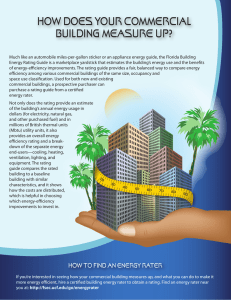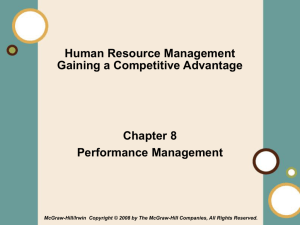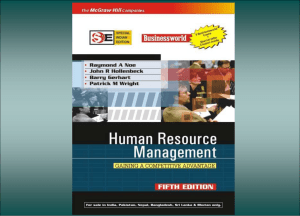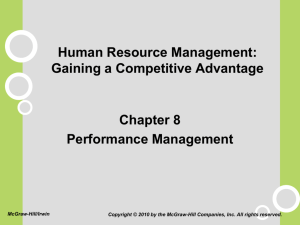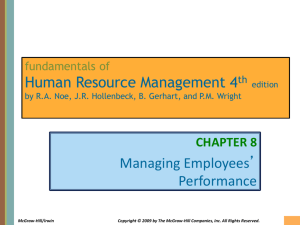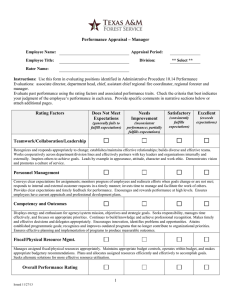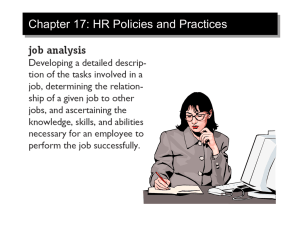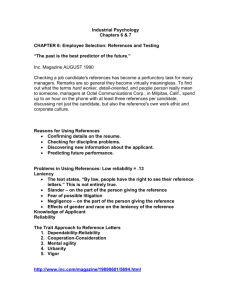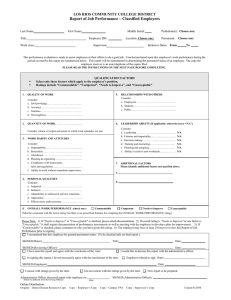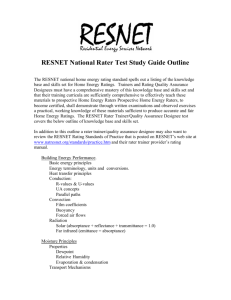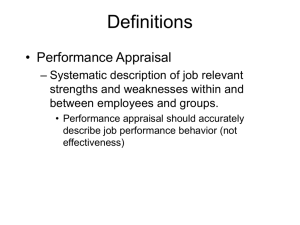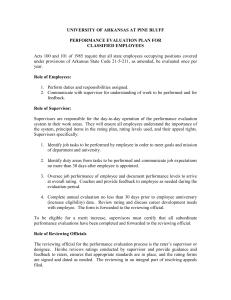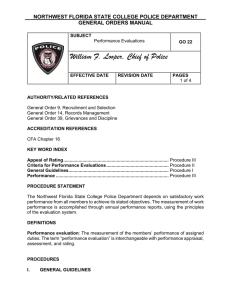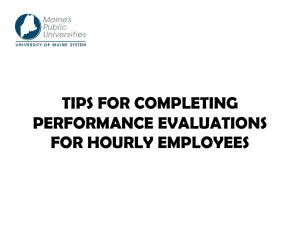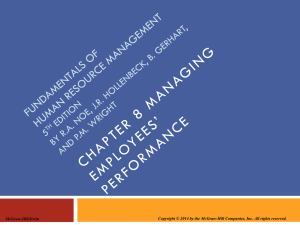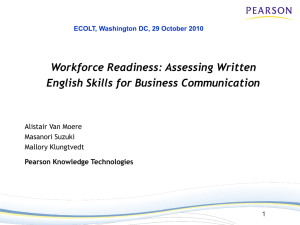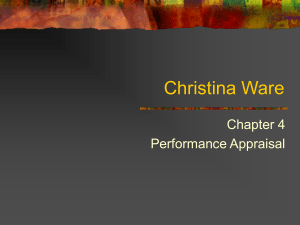Rating Biases and Personal Perceptions
advertisement
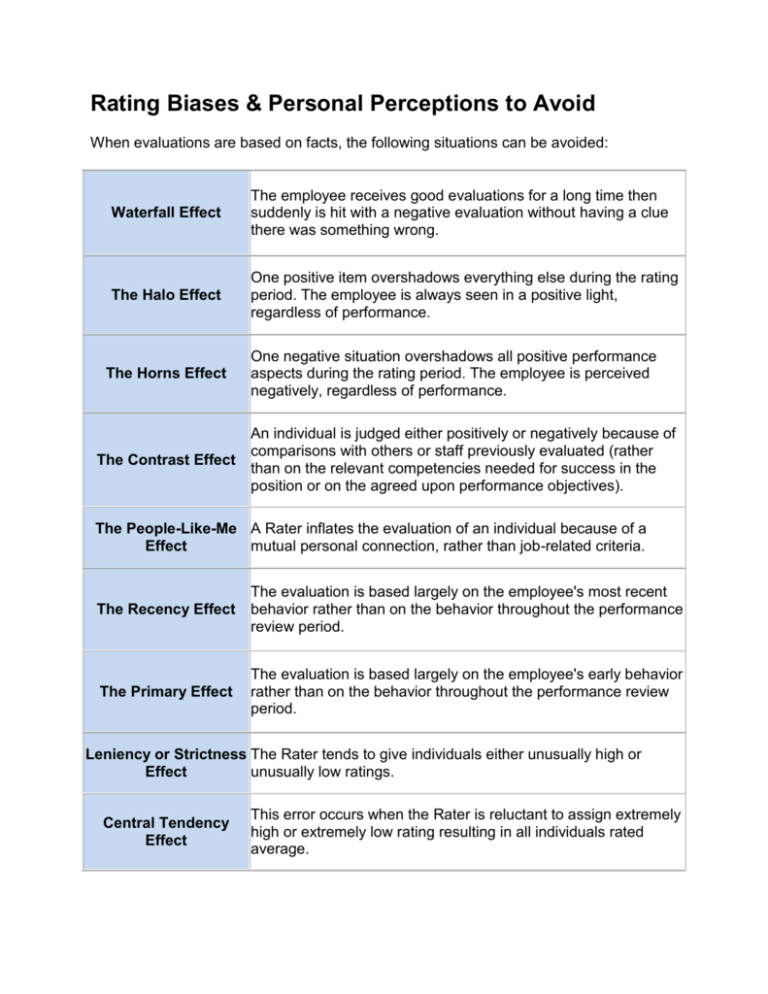
Rating Biases & Personal Perceptions to Avoid When evaluations are based on facts, the following situations can be avoided: Waterfall Effect The employee receives good evaluations for a long time then suddenly is hit with a negative evaluation without having a clue there was something wrong. The Halo Effect One positive item overshadows everything else during the rating period. The employee is always seen in a positive light, regardless of performance. The Horns Effect The Contrast Effect One negative situation overshadows all positive performance aspects during the rating period. The employee is perceived negatively, regardless of performance. An individual is judged either positively or negatively because of comparisons with others or staff previously evaluated (rather than on the relevant competencies needed for success in the position or on the agreed upon performance objectives). The People-Like-Me A Rater inflates the evaluation of an individual because of a Effect mutual personal connection, rather than job-related criteria. The Recency Effect The evaluation is based largely on the employee's most recent behavior rather than on the behavior throughout the performance review period. The Primary Effect The evaluation is based largely on the employee's early behavior rather than on the behavior throughout the performance review period. Leniency or Strictness The Rater tends to give individuals either unusually high or Effect unusually low ratings. Central Tendency Effect This error occurs when the Rater is reluctant to assign extremely high or extremely low rating resulting in all individuals rated average.

